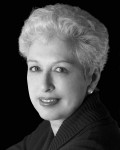by Edna Landau
To ask a question, please write Ask Edna.
Hi, Edna. My name is Caitlin Mehrtens and I’m a first year harp student at the Oberlin Conservatory. I have a question about being humble and marketing oneself as a musician. I have struggled in part with balancing being humble and writing a bio or practicing my “elevator speech”. I feel like one can completely turn someone off from themselves by being too forward or boisterous in an introduction. What do you recommend in this situation? Where is the balance between sparking someone’s interest and being overpowering in listing impressive accomplishments? Thank you so much for your time. —Caitlin Mehrtens
Dear Ms. Mehrtens:
Thank you for writing with such an interesting question. It struck a chord with me because I was brought up to be humble and perhaps even self-effacing about my accomplishments. As an artist, you are joining a community in which it is expected that musicians will have a current bio summarizing their accomplishments. Nothing about such a bio would appear boastful unless the writer employed superlatives that could be considered questionable. An artist who is described as “in great demand throughout North America” had better truly have a busy schedule. An artist whose bio states that they “captivated audiences with their compelling performances” should have some concrete critical acclaim that attests to that. The people who will matter in your performance career will generally disregard vague, unsubstantiated verbiage and focus on the actual achievements enumerated in the bio. They will look for signs that the artist is an interesting individual and performer. Musical signs might include choice of repertoire, commissioned works, construction of programs or interesting collaborations with fellow musicians. If you have been entrepreneurial in your activities to date, perhaps having started your own festival, brought concerts to seniors who couldn’t leave their residences or established a harp and poetry series at a local bookstore on weekends, it will tell them more about you than some vague unsubstantiated adjectives. Although bios don’t usually contain quotes in them, it is all right to start a bio with a phrase such as “hailed by the Cleveland Plain Dealer as a most accomplished and riveting artist” (their words, not yours!). However, bios that are dotted with phrases or sentences in quotes are cumbersome to read and also frustrating, when the reader is simply trying to get at the facts. Such review quotes are better left to a page of review excerpts or the acclaim section of a website. As to your “elevator speech” or chance encounter with anyone who might prove helpful to you some day, the key element is your naturalness and ability to genuinely convey enthusiasm for something that is very important to you. If you say “a year ago, I never thought I would have an opportunity to make a recording but now, thanks to Kickstarter.com, I was able to raise $8000 and I’m excited that it will be available for sale next week,” no one will find that boastful. They will admire your initiative. If you enter a competition and you triumph over 50 other contestants, you would be justified to feel proud of your accomplishment. If you say “I just returned from Israel where I spent a week participating in a harp competition; I would have been happy to even get into the Finals but I’m so excited that I won,” you share an accomplishment with a touch of humility that almost anyone would find admirable.
To ask a question, please write Ask Edna.
© Edna Landau 2011
